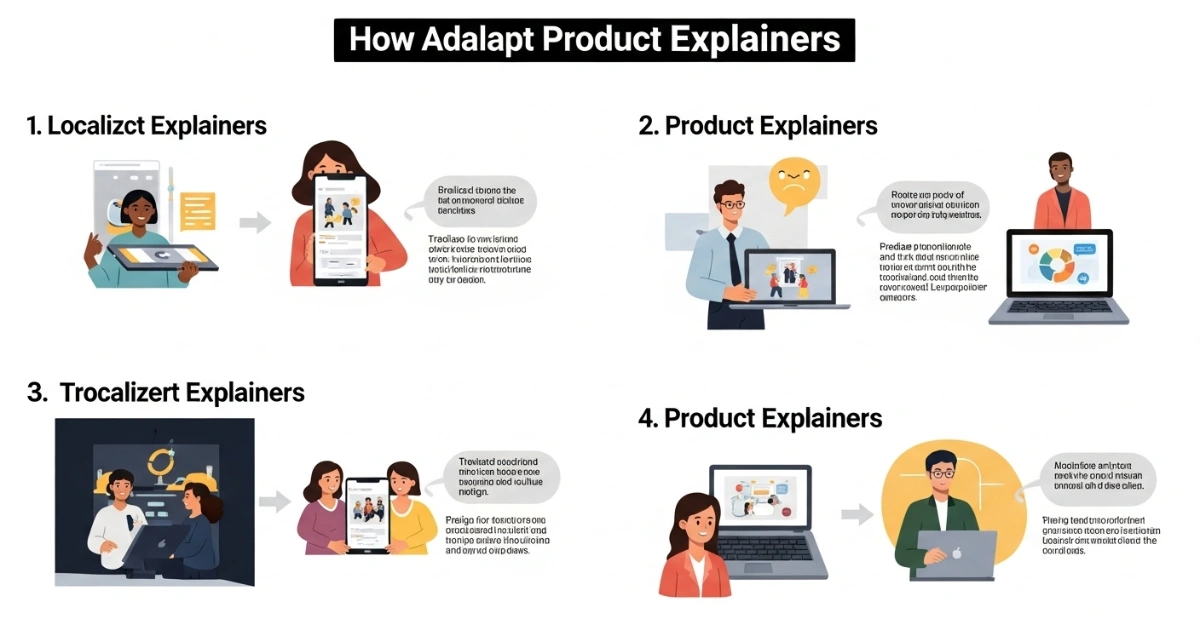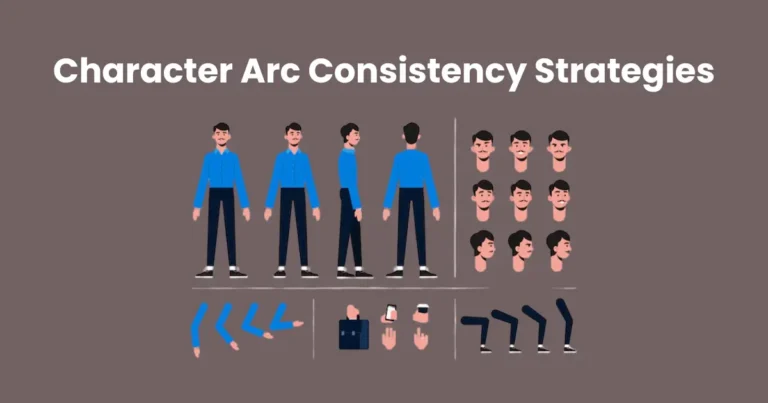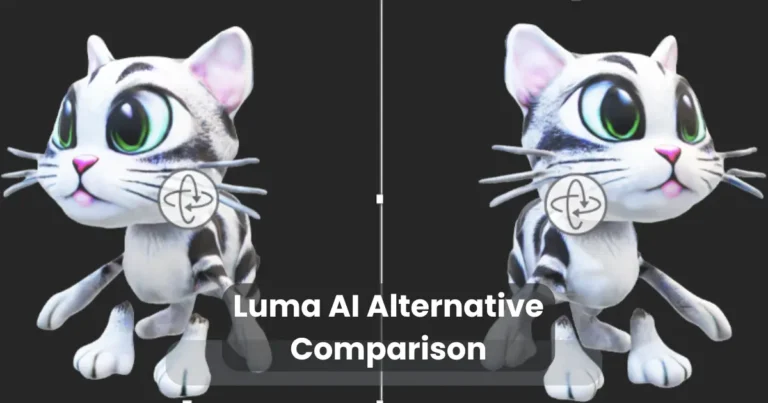How to Localize Product Explainers: A Comprehensive Guide

Contents
- 1 Why Localization Matters for Product Explainers
- 2 Step 1: Understand Your Target Audience
- 3 Step 2: Translate Content Accurately
- 4 Step 3: Adapt Visual and Multimedia Elements
- 5 Step 4: Optimize for Local SEO
- 6 Step 5: Test and Refine Your Explainers
- 7 Step 6: Leverage Technology for Scalability
- 8 Step 7: Maintain Consistency Across Markets
- 9 Common Challenges and How to Overcome Them
- 10 Case Studies: Successful Localization Examples
To localize product explainers effectively, businesses must adapt their content to resonate with diverse audiences across different cultures, languages, and regions. Product explainers—whether videos, written guides, or interactive demos—are critical for showcasing a product’s value. However, a one-size-fits-all approach often fails to engage global customers. Localization ensures that your product explainers feel native to each market, increasing user trust and conversion rates. This guide explores actionable strategies to localize product explainers, helping you maximize their impact. From understanding cultural nuances to optimizing for SEO in multiple languages, we’ll cover the essential steps to create compelling, localized content that drives results.
Why Localization Matters for Product Explainers
Localization is more than translation—it’s about tailoring content to align with cultural, linguistic, and market-specific expectations. Here’s why it’s crucial for product explainers:
- Enhanced User Engagement: Localized explainers connect emotionally with audiences, making them more likely to engage with your product.
- Improved Conversion Rates: When customers understand your product in their native language and cultural context, they’re more likely to make a purchase.
- Global Market Reach: Localization allows you to tap into new markets, expanding your brand’s footprint.
- Brand Trust and Credibility: Content that reflects local customs and idioms builds trust, positioning your brand as customer-centric.
For example, a product explainer for a tech gadget might emphasize affordability in one region and cutting-edge features in another, depending on local priorities. By addressing these differences, you ensure your content resonates.
Step 1: Understand Your Target Audience
Before you localize product explainers, research your target markets thoroughly. This step lays the foundation for effective localization. Here’s how to approach it:

Conduct Market Research
- Demographics: Identify the age, gender, and income levels of your audience in each region.
- Cultural Preferences: Understand local customs, values, and taboos. For instance, humor that works in the U.S. may fall flat in Japan.
- Language Nuances: Note dialects and regional variations. For example, Spanish in Mexico differs from Spanish in Spain.
Analyze Consumer Behavior
- Purchasing Habits: Study how customers in each market make buying decisions. Are they price-sensitive or quality-driven?
- Media Consumption: Determine whether your audience prefers video explainers, text-based guides, or interactive demos.
Use Surveys and Feedback
Gather insights directly from your audience through surveys or social media polls. For instance, ask whether they prefer short, snappy videos or detailed written guides. This data informs your localization strategy.
By understanding your audience, you can tailor your product explainers to meet their specific needs, ensuring maximum relevance.
Step 2: Translate Content Accurately
Translation is the backbone of localization, but it must be precise and culturally relevant. Follow these tips to localize product explainers effectively:

Hire Professional Translators
- Native Speakers: Work with translators who are native speakers of the target language to capture linguistic nuances.
- Subject Matter Experts: Choose translators familiar with your industry to ensure technical terms are accurate.
Use Translation Tools Wisely
Tools like DeepL or Google Translate can assist, but they’re not foolproof. Always have a human editor review machine-translated content to avoid errors or awkward phrasing.
Adapt Idioms and Slang
Direct translations of idioms often confuse audiences. For example, the English phrase “kick the bucket” won’t make sense in most languages. Replace it with a culturally appropriate equivalent.
Localize Measurements and Formats
- Convert measurements (e.g., miles to kilometers) and date formats (e.g., MM/DD/YYYY to DD/MM/YYYY) to match local standards.
- Adjust currency symbols and pricing to reflect the local economy.
Accurate translation ensures your product explainers are clear and relatable, setting the stage for deeper localization.
Step 3: Adapt Visual and Multimedia Elements
Product explainers often include visuals, videos, or animations. These elements must also be localized to resonate with your audience. Here’s how:

Customize Visuals
- Imagery: Use images that reflect the local culture. For example, show diverse ethnicities or local landmarks to make the content feel familiar.
- Colors: Be mindful of color symbolism. In China, red signifies good luck, while in some Western cultures, it may signal danger.
Localize Video Content
- Voiceovers: Hire voice actors with regional accents to make videos feel authentic.
- Subtitles: Provide accurate subtitles for accessibility and clarity.
- Background Music: Choose music that aligns with local tastes, avoiding genres that may be unpopular in certain regions.
Update Icons and Symbols
Icons that are intuitive in one culture may confuse others. For example, a “thumbs-up” icon may not universally convey approval. Replace or test such symbols with local audiences.
By adapting visuals and multimedia, you create product explainers that feel native and engaging to each market.
Step 4: Optimize for Local SEO
To maximize the reach of your product explainers, optimize them for local search engines. This step ensures your content ranks well in each target market. Here’s how to localize product explainers for SEO:

Research Local Keywords
- Use tools like Google Keyword Planner or Ahrefs to identify high-volume, low-competition keywords in the target language.
- Focus on long-tail keywords, such as “how to localize product explainers in Spanish,” to attract niche audiences.
Translate and Localize Meta Data
- Meta Titles: Keep titles under 60 characters and include the main keyword.
- Meta Descriptions: Write compelling descriptions under 150 characters, incorporating the main keyword naturally.
- Alt Text: Translate alt text for images to improve accessibility and SEO.
Adapt Content Structure
- Use headers (H1, H2, H3) with localized keywords to improve readability and searchability.
- Include internal links to other localized pages on your website to boost SEO.
Consider Local Search Engines
In some regions, Google isn’t the dominant search engine. For example:
- In China, optimize for Baidu by focusing on simplified Chinese characters and mobile-friendly content.
- In Russia, target Yandex by prioritizing fast-loading pages and Cyrillic text.
By optimizing for local SEO, you ensure your product explainers reach the right audience at the right time.
Step 5: Test and Refine Your Explainers
Testing is critical to ensure your localized product explainers resonate with your audience. Follow these steps:

Conduct A/B Testing
- Test different versions of your explainer (e.g., video vs. text) to see which performs better in each market.
- Experiment with variations in tone, length, or visuals to identify what drives engagement.
Gather User Feedback
- Use surveys or focus groups to collect feedback from local audiences.
- Monitor comments on social media or blog posts to gauge reactions.
Track Performance Metrics
- Engagement Metrics: Measure time spent on page, bounce rates, and video completion rates.
- Conversion Metrics: Track how many users take desired actions, such as signing up or making a purchase.
- SEO Metrics: Monitor keyword rankings and organic traffic in each region.
Use these insights to refine your product explainers, ensuring they remain relevant and effective.
Step 6: Leverage Technology for Scalability
To localize product explainers at scale, leverage technology to streamline the process. Here are some tools and platforms to consider:

Content Management Systems (CMS)
- Use CMS platforms like WordPress or Drupal with localization plugins (e.g., WPML) to manage multilingual content.
- Organize content by region to simplify updates and maintenance.
Localization Management Platforms
- Tools like Phrase or Lokalise help manage translation workflows, ensuring consistency across multiple languages.
- These platforms integrate with your CMS or website, automating parts of the localization process.
AI-Powered Localization
- AI tools can assist with initial translations or suggest culturally relevant adaptations.
- However, always combine AI with human oversight to ensure accuracy and cultural sensitivity.
By integrating technology, you can localize product explainers efficiently, saving time and resources while maintaining quality.
Step 7: Maintain Consistency Across Markets
Consistency is key to building a cohesive brand image. Here’s how to maintain it while localizing product explainers:

Create a Localization Style Guide
- Define brand voice, tone, and terminology for each language.
- Include guidelines for visuals, fonts, and color schemes to ensure uniformity.
Use a Centralized Content Repository
- Store all localized assets in a single repository, such as Google Drive or a DAM (Digital Asset Management) system.
- This ensures teams across regions access the latest versions of explainers.
Train Your Team
- Educate your marketing and localization teams on your brand’s guidelines.
- Provide training on cultural sensitivity to avoid missteps in new markets.
Consistency reinforces your brand’s identity, making your product explainers recognizable and trustworthy worldwide.
Common Challenges and How to Overcome Them
Localizing product explainers comes with challenges. Here’s how to address them:

Challenge 1: High Costs
Localization can be expensive, especially for small businesses. To manage costs:
- Prioritize high-potential markets to allocate resources effectively.
- Use cost-effective tools like machine translation for initial drafts, followed by human editing.
Challenge 2: Cultural Missteps
Misunderstanding cultural nuances can alienate audiences. To avoid this:
- Work with local experts to review content before launch.
- Test content with small focus groups to catch potential issues.
Challenge 3: Time-Intensive Process
Localization can be time-consuming, especially for large-scale projects. To streamline:
- Automate repetitive tasks using localization platforms.
- Create templates for explainers to simplify adaptation.
By anticipating these challenges, you can localize product explainers more effectively and efficiently.
Case Studies: Successful Localization Examples
Case Study 1: Tech Company Expands to Japan
A U.S.-based tech company localized its product explainer videos for the Japanese market. They:
- Replaced American imagery with Japanese cultural references.
- Used a native Japanese voice actor for authenticity.
- Optimized for Baidu with localized keywords. Result: A 30% increase in engagement and a 15% boost in conversions in Japan.
Case Study 2: E-Commerce Brand Targets Latin America
An e-commerce brand localized its written product guides for Mexico and Brazil. They:
- Translated content into Mexican Spanish and Brazilian Portuguese.
- Adjusted pricing displays to local currencies.
- Used A/B testing to refine call-to-action phrases. Result: A 25% increase in organic traffic and a 10% rise in sales in both markets.
These examples show how strategic localization can drive measurable results.
Conclusion
To localize product explainers successfully, businesses must combine cultural understanding, accurate translation, and strategic optimization. By researching your audience, adapting visuals, optimizing for local SEO, and leveraging technology, you can create explainers that resonate globally. Testing and refining your content ensures it remains effective, while maintaining consistency strengthens your brand. With these steps, you can localize product explainers to engage diverse audiences, boost conversions, and expand your global reach. Start implementing these strategies today to unlock the full potential of your product explainers in every market.






